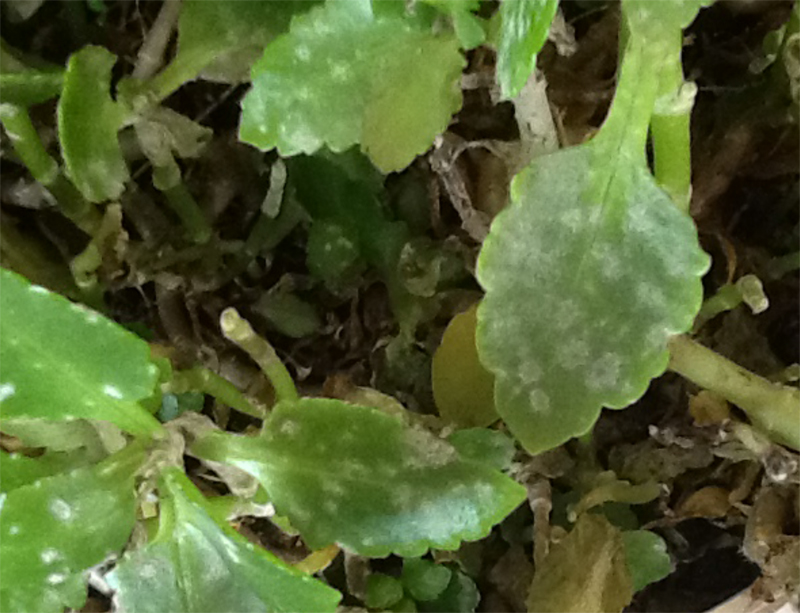picture of the week
January 17, 2022
Powdery Mildew on Houseplants
Gail Ruhl - retired, Sr. Plant Disease Diagnostician
During winter months, a fungal disease known as powdery mildew is often observed on indoor plants such as African violet, begonia, ivy, jade, and Kalanchoe. Fungal growth usually begins as discrete, usually circular, powdery white spots. As these spots expand they usually coalesce, producing a continuous matt of mildew, often mistaken for dirt or dust on indoor plants. Leaves, stems, buds, and flowers are susceptible to infection, with the majority of infections occurring on the leaves and flowers. Severely infected leaves and flowers may eventually brown and die.
Conditions that favor disease development indoors are poor air circulation, low light, and cooler temperatures near 70° F. The fungi which cause powdery mildew are spread by spores produced in the dusty, white patches on leaves and other plant parts. Depending on the indoor environmental conditions, the fungus can continue to grow and spread during the entire year.
 Powdery Mildew on Kalanchoe
Powdery Mildew on Kalanchoe Although chemical treatments are available for powdery mildew, cultural controls are usually just as effective and preferable for managing powdery mildew within the home. Keep plants in well-ventilated areas and avoid overcrowding. Do not mist plants and avoid wetting the leaves when watering. At the first sign of infection, isolate the plant and remove and dispose of all infected plant parts. Severely infected plants may need to be discarded. It may be possible to start a new plant by taking a cutting from healthy tissue.
Click on image to download publication


